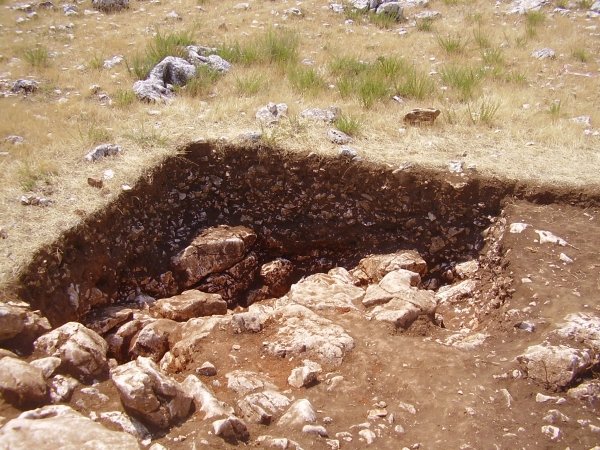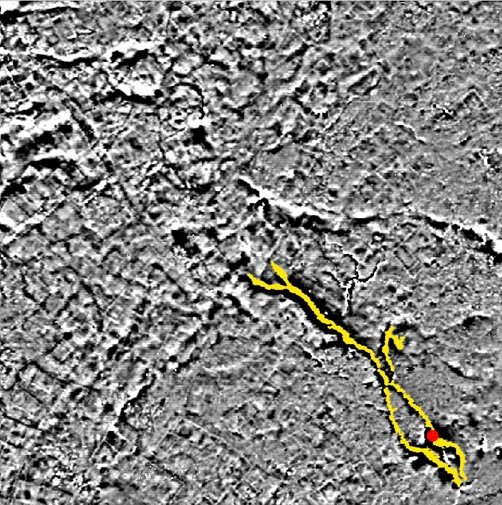This year’s excavations at Tepe Düzen started with two sondages on the eastern part of the plateau, in order to find the origin and the use of the metal ores (magnetite and cassiterite) and semi-precious stones (beryl and grossular) that were found at Tepe Düzen last year. One sondage, lead by Kim Vyncke and Laura Verheyden (K.U.Leuven), concentrated on an anomaly that was found by the geomagnetic survey of Branko Music’s team (University of Ljubljana) in 2007. The anomaly was highly magnetic and was supposedly an ore (possibly iron) vein. The sondage was started in order to identify the nature of the magnetic anomaly and whether or not a metal ore is naturally present at Tepe Düzen.
A trench of 5 by 5 m was excavated. The main archaeological feature in this area proved to be a refuse pit, mainly filling up what seemed to be a natural depression formed by bedrock and virgin soil. On the northeastern part of the pit, along the eastern side of the trench, a red clayish soil was found. Measurements of the magnetic value of the different soil types inside the pit by Branko Music proved that this red clayish soil was highly magnetic, whereas the values of the other soil types were more average. No visible pieces of ores were found, and the bedrock – in which ore veins could occur – proved to be really deep in this area. More tests will be done to determine whether the red soil is the origin of the geomagnetic anomaly, or if one has to look for an different origin, possibly a geological entity inside the limestone bedrock.




this blog rocks. Very interesting.
I love your blog 🙂